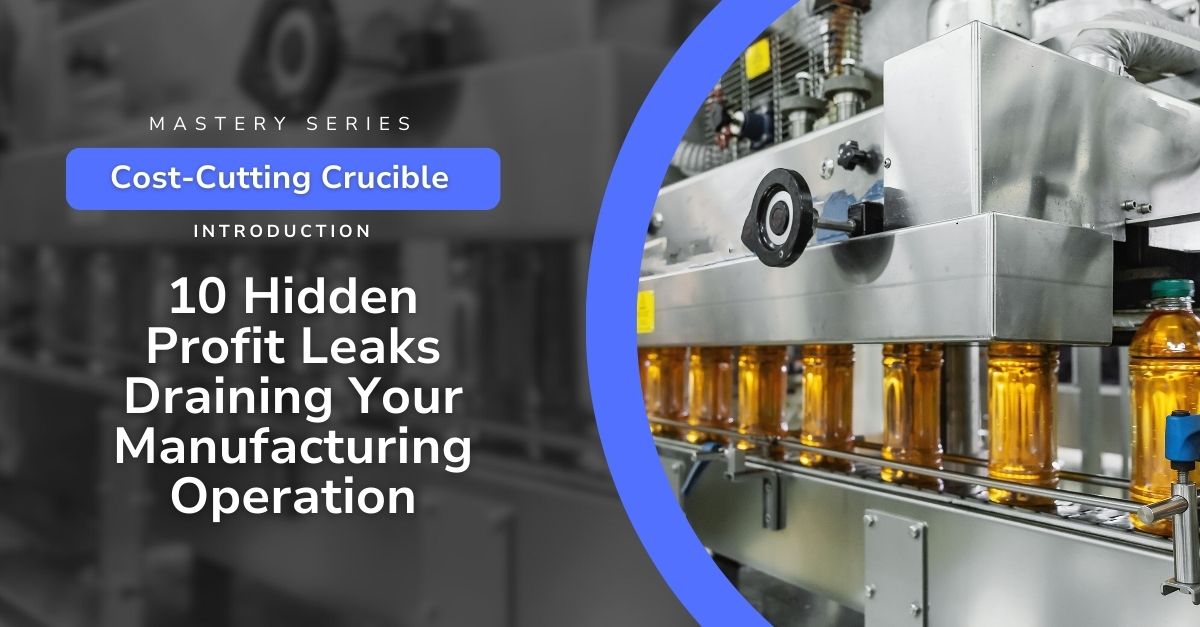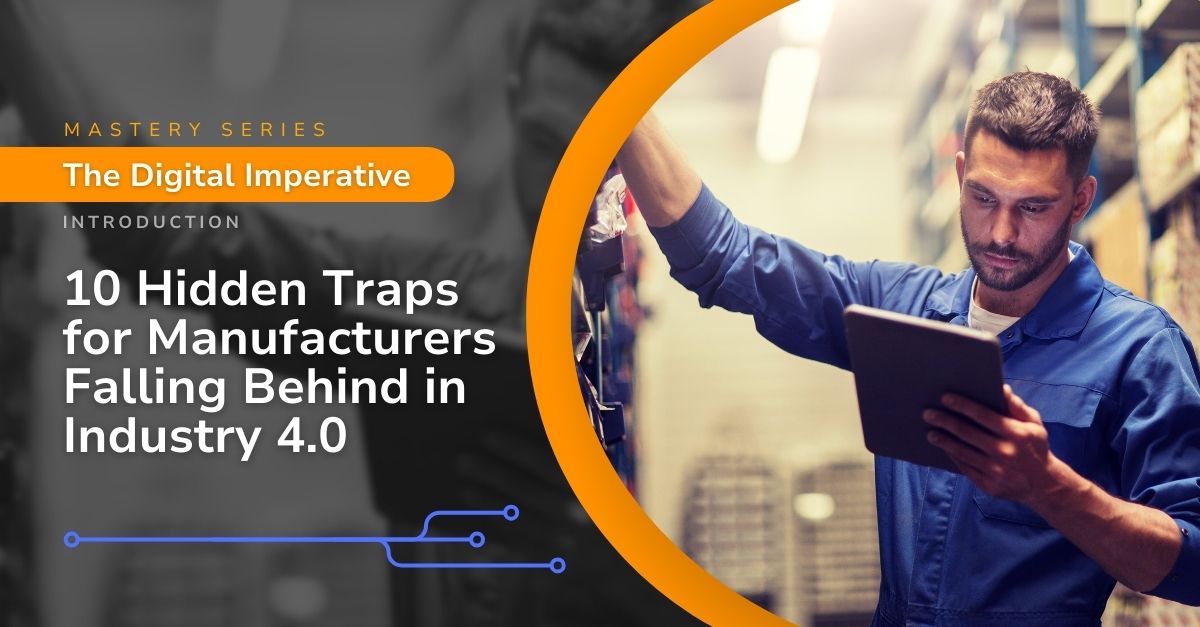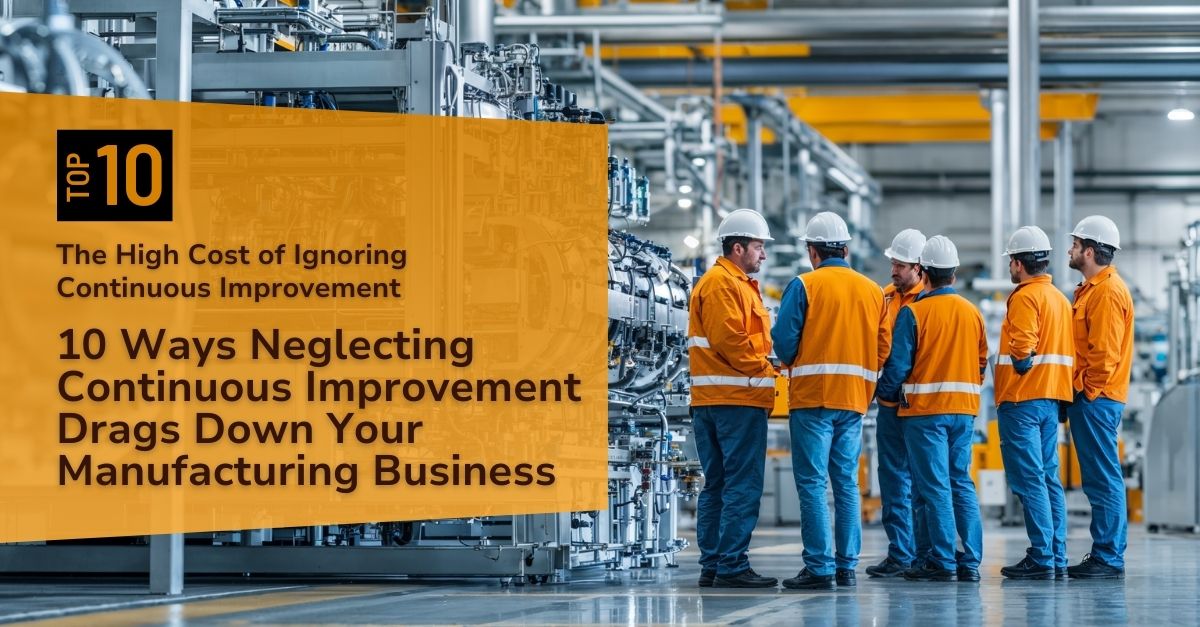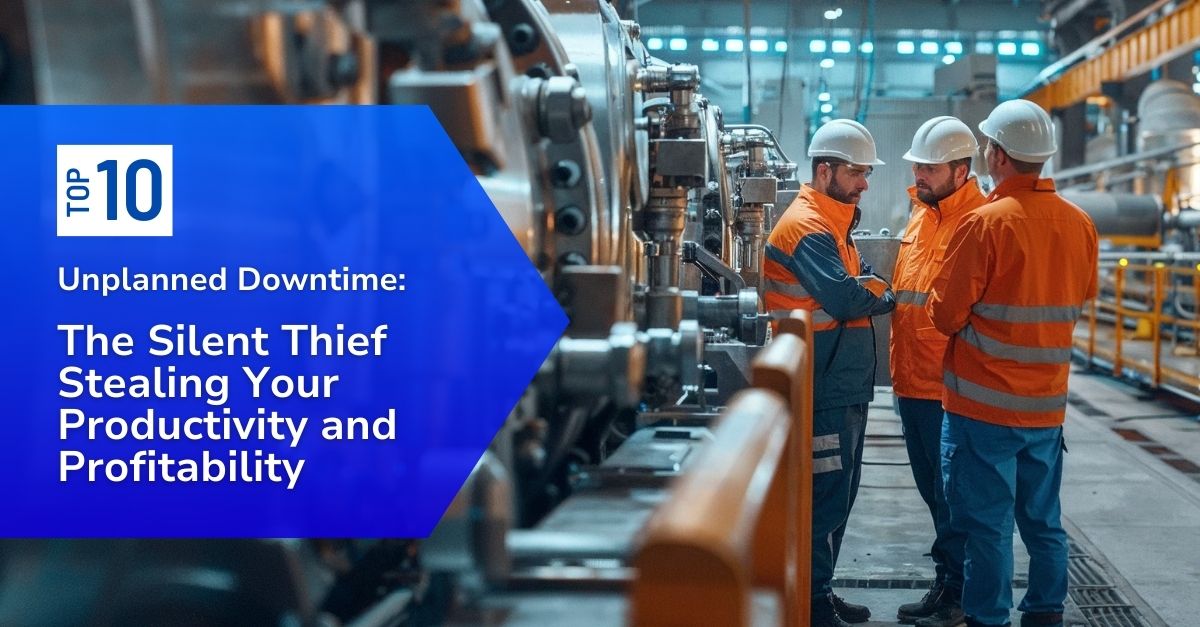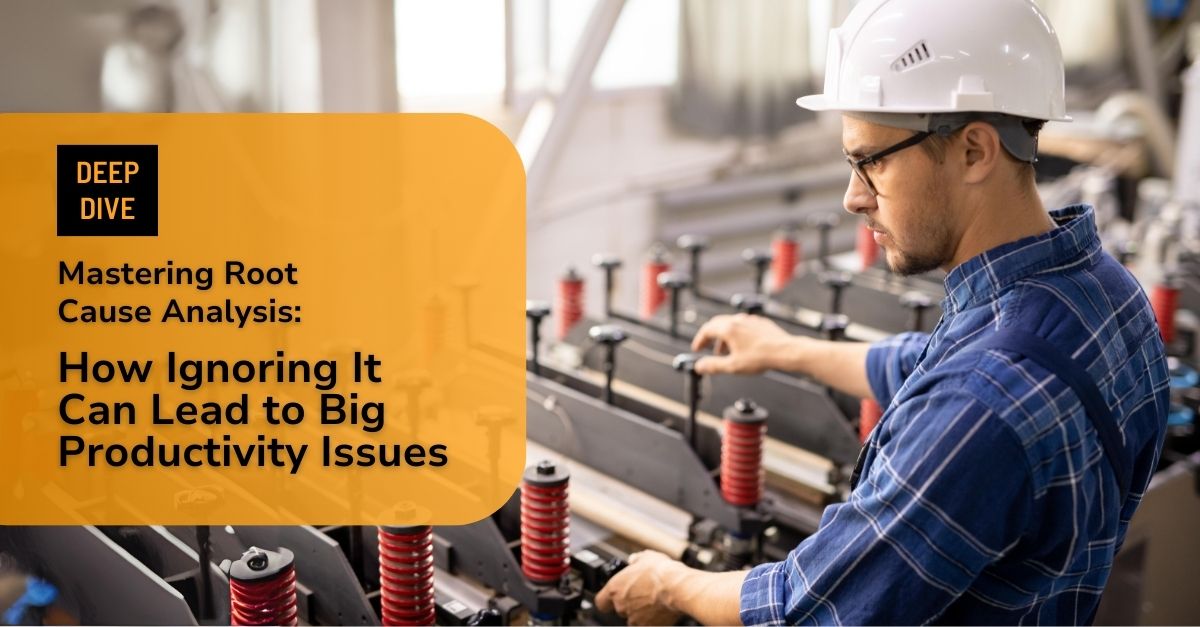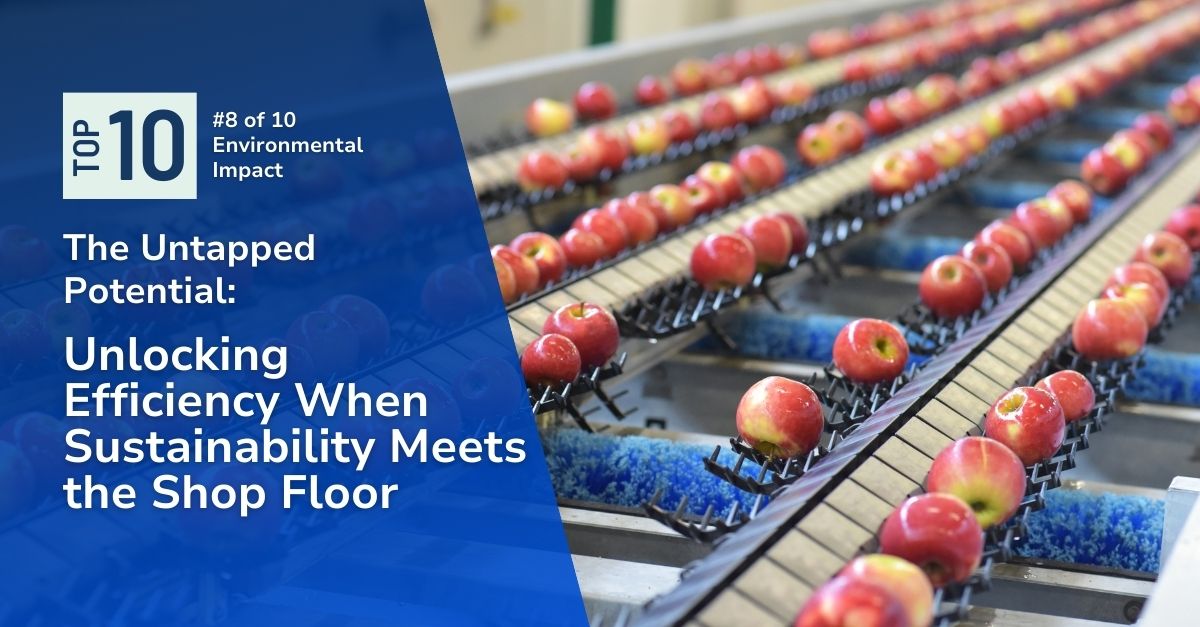
For manufacturers today, sustainability is no longer just a marketing checkbox. It is a day-to-day operational reality that touches every part of the value chain.
Material selection, equipment operation, waste handling, and even workforce training are all affected. When sustainability is approached carelessly, the results can be costly: downtime spikes, scrap piles grow, and capacity utilization drops. When it is done with a deliberate strategy, it becomes a driver of efficiency, resilience, and competitive advantage.
The real challenge is that environmental responsibility rarely follows a straight path. A material substitution that looks good on paper can jam up equipment or create inconsistent finishes.
A well-intentioned waste initiative can overwhelm disposal systems or trigger new compliance requirements. Even long-term agreements meant to secure supply stability can reduce agility when markets shift. These are not theoretical risks. They are the kinds of day-to-day frustrations that operations managers and supervisors wrestle with every time a new initiative hits the floor.
Below are ten areas where environmental responsibility often collides with operational efficiency, along with practical steps to address them.
1Performance Trade-offs with Sustainable Materials:
Negative Impact: Recycled plastics, bio-based composites, and other sustainable inputs often behave differently under heat, pressure, or stress. This can lead to weak joints, variable melt flows, or poor durability. Operators may need to slow down cycle times, which reduces throughput and raises per-unit cost.
Positive Step: Build strong partnerships with suppliers and invest in pre-production testing. Use controlled trials on pilot lines to validate material performance. Where possible, redesign products with sustainable materials in mind rather than forcing them into legacy designs.
2Unexpected Process Changes:
Negative Impact: Eco-friendly processes may require different curing times, heating ranges, or chemical mixes. When adjustments are made without a clear plan, tolerances drift, scrap rates climb, and operators lose confidence in the process. The disruptions ripple into scheduling and order fulfillment.
Positive Step: Simulate changes in advance and run pilot batches to identify issues early. Engage both engineering and production staff in the transition so process tweaks are understood before they hit full-scale operations.
3Equipment Compatibility Issues:
Negative Impact: Machines designed for legacy materials may run less efficiently with greener alternatives. Higher wear on seals, unexpected residue buildup, or calibration drift can increase maintenance needs and reduce uptime. In some cases, the line may not be able to run at all.
Positive Step: Perform compatibility audits before making changes. Retrofitting or upgrading key components is often less costly than constant downtime. For new capital purchases, include compatibility with sustainable materials as a required specification.
4Waste Stream Modifications:
Negative Impact: Switching materials or processes often creates new byproducts. Existing collection and disposal systems may not be designed to handle them safely or economically. Costs rise, compliance risks increase, and operators may struggle with unclear disposal procedures.
Positive Step: Map out new waste streams and look for opportunities to reduce, reuse, or repurpose. In some cases, waste can be sold or recycled into value streams. Partner with disposal vendors early to negotiate better handling options.
5Batch Size Limitations:
Negative Impact: Some sustainable inputs degrade faster or require tighter quality control, which forces shorter production runs. Smaller batches increase changeovers, raise scheduling complexity, and lower overall equipment effectiveness.
Positive Step: Rethink scheduling strategies to accommodate shorter runs without losing efficiency. Lean tools, agile planning, and just-in-time production can keep the system balanced. For certain product lines, smaller batches may even improve responsiveness to customer demand.
6Unintentional Greenwashing:
Negative Impact: Overstating sustainability efforts or skipping validation steps may damage credibility when customers ask tough questions. Once buyers perceive claims as exaggerated, it can undermine trust in the company and its products across the board.
Positive Step: Commit to transparency. Secure third-party certifications and provide clear data on improvements. Acknowledging where challenges remain often builds more trust than making sweeping claims.
7Balancing Costs of “Doing It Right”:
Negative Impact: Many sustainability upgrades come with upfront premiums. Equipment retrofits, new certifications, and specialized inputs all raise short-term costs. When these are viewed only as added expenses, leadership buy-in falters, and teams revert to old methods.
Positive Step: Present sustainability as a business investment, not just a compliance expense. Factor in reduced energy consumption, fewer penalties, and access to new markets. Build business cases that show measurable returns over time.
8Maintaining Energy Efficiency Focus:
Negative Impact: Major sustainability initiatives often capture leadership attention while smaller, everyday energy efficiency projects fall by the wayside. Neglected basics, like compressed air leaks or under-optimized HVAC systems, quietly erode cost savings.
Positive Step: Treat energy efficiency as a standing operational priority. Train employees to spot inefficiencies and recognize contributions. Make energy data visible so progress is tracked and celebrated.
9Long-Term Financial Viability:
Negative Impact: Some sustainability projects involve uncertain returns. When ROI timelines are unclear, projects stall or get cut in favor of short-term wins. This breeds skepticism among staff and slows momentum across the organization.
Positive Step: Prioritize initiatives that provide both environmental and financial benefits. Show leadership and frontline employees the link between sustainability and profitability, such as lower utility bills, reduced regulatory fines, and increased consumer demand.
10Inflexibility Due to Long-Term Commitments:
Negative Impact: Contracts for renewable energy, sustainable feedstocks, or supplier partnerships can be difficult to exit if market conditions change. This reduces adaptability and may limit access to better options that emerge later.
Positive Step: Negotiate flexibility into agreements, such as review points, exit clauses, or shared risk models. Maintain relationships with multiple suppliers to prevent being locked into a single path.
Conclusion for Operations Leadership
Environmental impact concerns create a hidden chain reaction that drags down capacity utilization when not proactively addressed. This is a complex challenge with no simple solutions. However, recognizing these subtle yet destructive forces is the first step toward mitigating their impact. By tackling these ten issues head-on, manufacturers can position themselves to be environmentally responsible and achieve peak operational performance, maximizing their output and potential.
Furthermore, a proactive approach to environmental impact allows manufacturers to capitalize on new opportunities. Consumers are increasingly environmentally conscious, and companies with demonstrably sustainable practices are poised to gain a significant competitive edge. Additionally, proactive environmental strategies can help manufacturers avoid costly regulatory compliance issues down the line.
How POWERS Can Help
At POWERS, our management consultants understand how sustainability pressures affect daily operations. We go beyond theory to uncover the real, shop-floor challenges that limit capacity. With the support of our DPS Digital production system, we help manufacturers:
- Identify the hidden impact: We conduct comprehensive audits of your processes, pinpointing inefficiencies and bottlenecks stemming from environmental initiatives.
- Develop strategic roadmaps: We don't just point problems out; we create actionable plans that weave sustainability into your operational fabric, maximizing efficiency and minimizing disruption.
- Unlock your facility's potential: Our customized solutions focus on unleashing your machines, materials, and workforce to their fullest capacity while being mindful of your environmental footprint.
If managing environmental impact while maximizing capacity seems like an impossible task, contact POWERS. We’ll transform this struggle into a competitive advantage.
Don’t let these challenges hold your manufacturing operations back. Contact POWERS today to explore how our expertise in both sustainability and operational excellence can propel your company toward its full potential. Let’s start the conversation: +1 678-971-4711 or info@thepowerscompany.com.
Continue Reading from this Mastery Series
- Part 1 – The Price of Lost Revenue and Profit Resulting from Underutilized Capacity
- Part 2 – How Rising Production Costs Hide Your Factory’s True Potential
- Part 3 – Poorly Managing Resources is Stealing Your Profits
- Part 4 – Break the Quality Struggle Cycle to Fix This Shop Floor Frustration
- Part 5 – From Chaos to Capacity: How to Tame Turnover and Optimize Your Operations
- Part 6 – Manufacturing Nightmares: When Your Shop Floor Can’t Keep Up
- Part 7 – When Supply Chain Disruptions Reveal Your True Capacity
- Part 8 – Unlocking Efficiency When Sustainability Meets the Shop Floor
- Part 9 – Understaffed and Underperforming on the Shop Floor
- Part 10 – How Blind Spot Vulnerabilities Impact Your Shop Floor’s Efficiency
